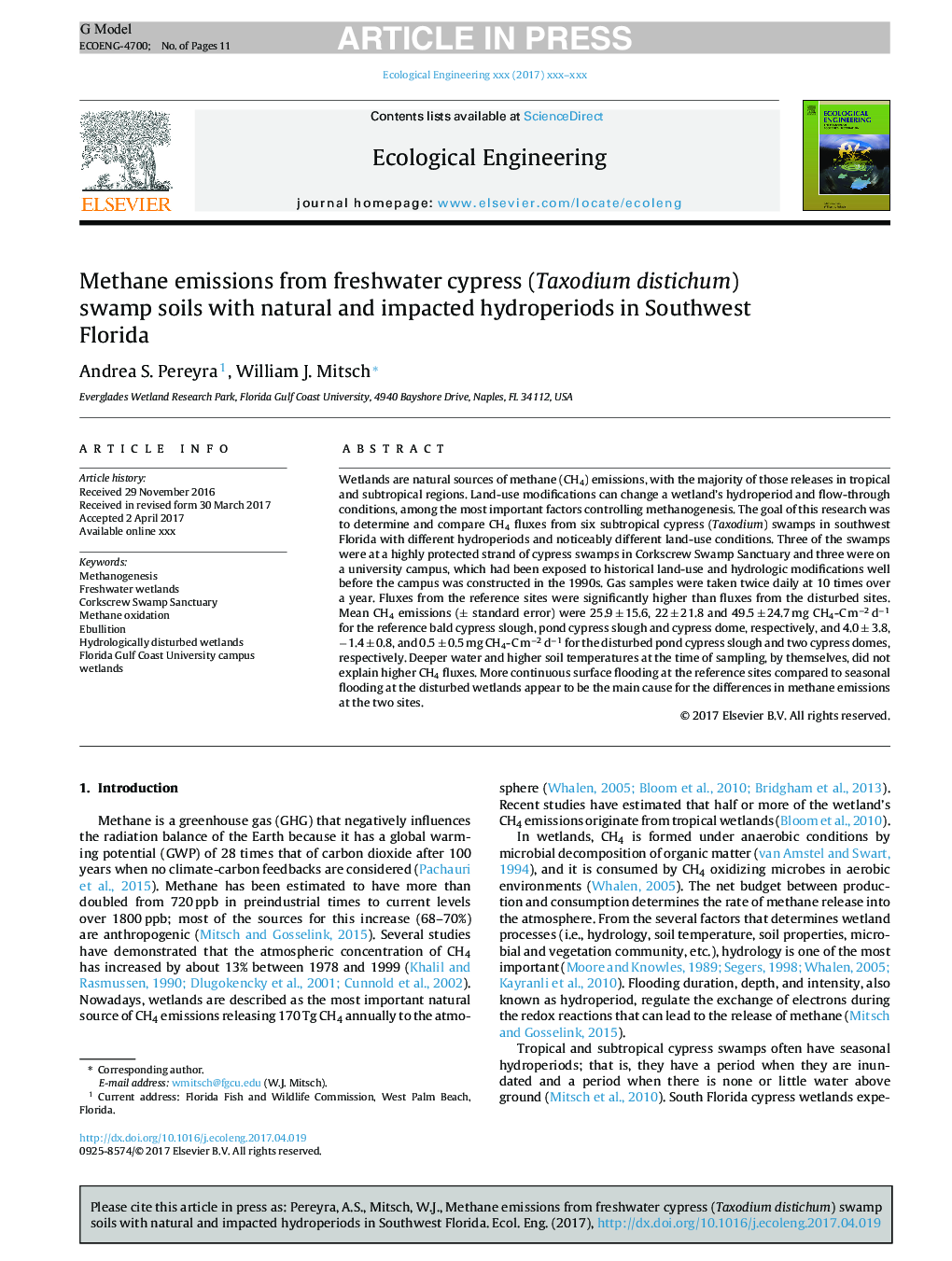| Article ID | Journal | Published Year | Pages | File Type |
|---|---|---|---|---|
| 8847979 | Ecological Engineering | 2018 | 11 Pages |
Abstract
Wetlands are natural sources of methane (CH4) emissions, with the majority of those releases in tropical and subtropical regions. Land-use modifications can change a wetland's hydroperiod and flow-through conditions, among the most important factors controlling methanogenesis. The goal of this research was to determine and compare CH4 fluxes from six subtropical cypress (Taxodium) swamps in southwest Florida with different hydroperiods and noticeably different land-use conditions. Three of the swamps were at a highly protected strand of cypress swamps in Corkscrew Swamp Sanctuary and three were on a university campus, which had been exposed to historical land-use and hydrologic modifications well before the campus was constructed in the 1990s. Gas samples were taken twice daily at 10 times over a year. Fluxes from the reference sites were significantly higher than fluxes from the disturbed sites. Mean CH4 emissions (± standard error) were 25.9 ± 15.6, 22 ± 21.8 and 49.5 ± 24.7 mg CH4-C mâ2 dâ1 for the reference bald cypress slough, pond cypress slough and cypress dome, respectively, and 4.0 ± 3.8, â1.4 ± 0.8, and 0.5 ± 0.5 mg CH4-C mâ2 dâ1 for the disturbed pond cypress slough and two cypress domes, respectively. Deeper water and higher soil temperatures at the time of sampling, by themselves, did not explain higher CH4 fluxes. More continuous surface flooding at the reference sites compared to seasonal flooding at the disturbed wetlands appear to be the main cause for the differences in methane emissions at the two sites.
Related Topics
Life Sciences
Agricultural and Biological Sciences
Ecology, Evolution, Behavior and Systematics
Authors
Andrea S. Pereyra, William J. Mitsch,
